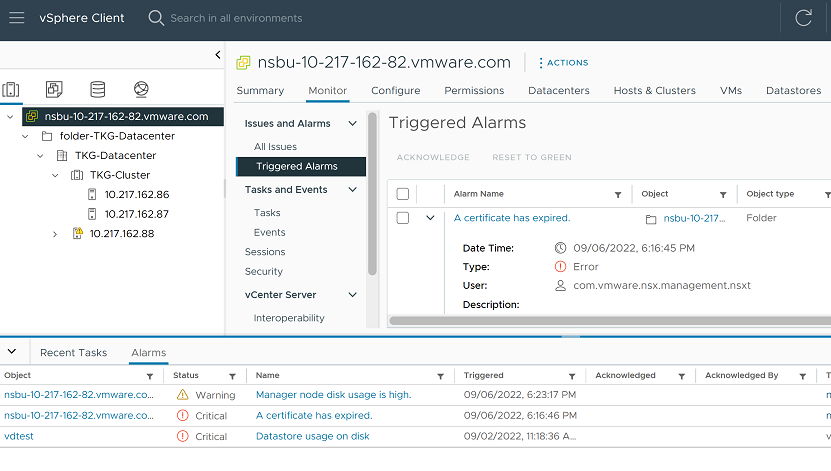As a VI admin you can view NSX generated alarms in VMware vCenter.
Note: The
NSX Alarms forwarding functionality is supported starting with
vSphere version 8.0 onwards.
After you install and configure
NSX from the
NSX page in
VMware vCenter environment,
NSX automatically registers its alarm definitions with
VMware vCenter. Any
NSX alarms generated are forwarded and displayed on the
vSphere Web Client UI. Alarm forwarding is only applicable with
NSX deployments in
VMware vCenter environment.

View
NSX Alarms on
vSphere Web Client UI at:
-
-
Alarms section
To identify a NSX alarm, go to the Triggered Alarms page and check the user field that triggered the alarm. The user com.vmware.nsx.management.nsxt identifies that the event was generated by NSX.
Note: If there are multiple alarms generated for a certain
NSX event, in
vSphere Web Client a summary event is displayed. The summary event takes you to
NSX Alarms UI page where all alarms of the same type are displayed. For example, if
NSX generates five alarms related to certificate expiry, the
Alarms tab in
vSphere Web Client displays only a single summary event for all the five certificate expiry alarms.
Caution: Do not delete any
NSX alarms from
VMware vCenter or reset any alarms (alarm turns to green indicating it is resolved) . If you delete an
Alarm Definition in
VMware vCenter, any alarm generated for that event may not be forwarded to
VMware vCenter.
If one of the NSX Manager goes down, another NSX Manager in the cluster takes over as the active manager. VMware vCenter synchronizes existing alarm definitions and triggered alarms with the current state of alarms on the new NSX Manager.